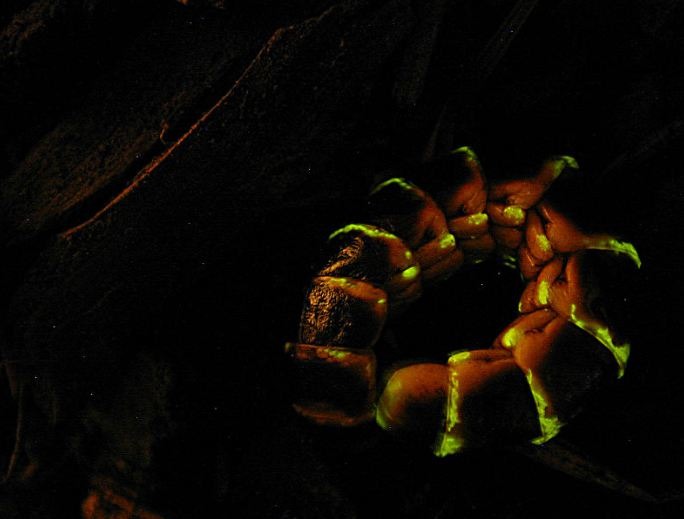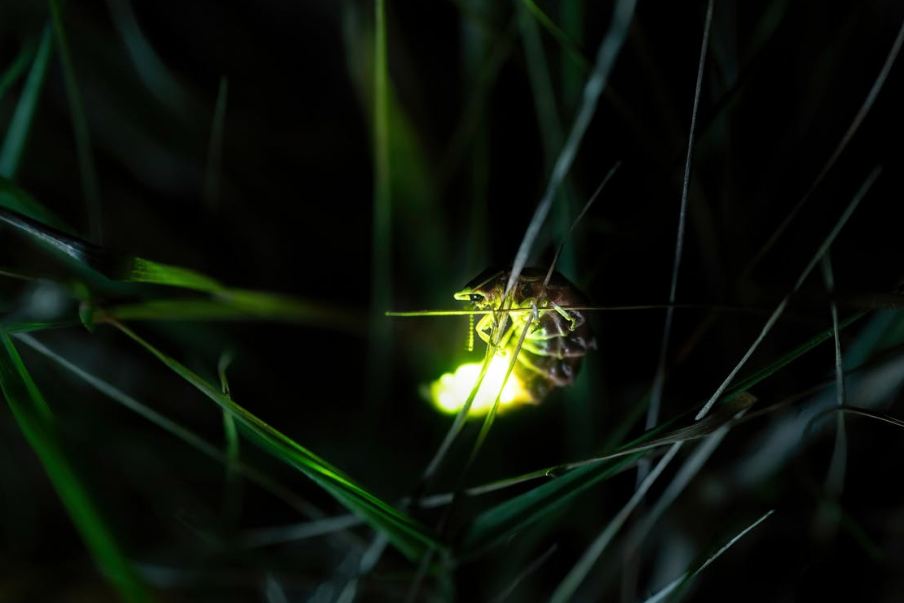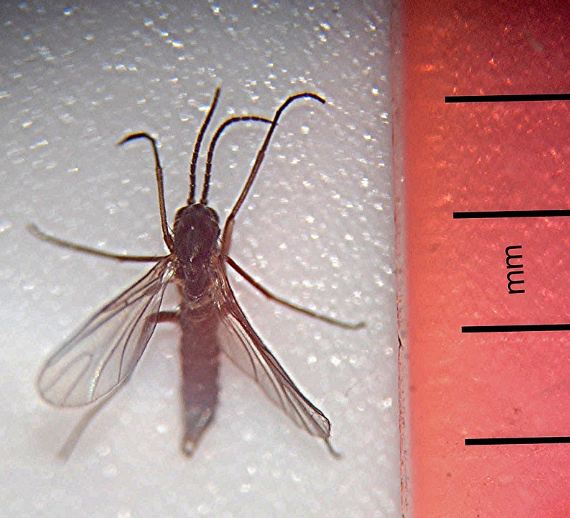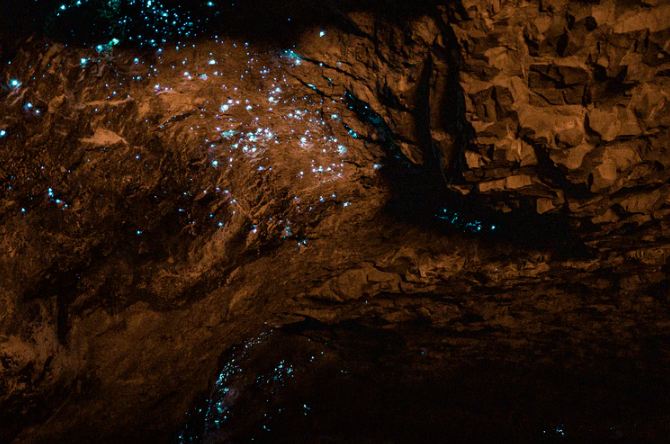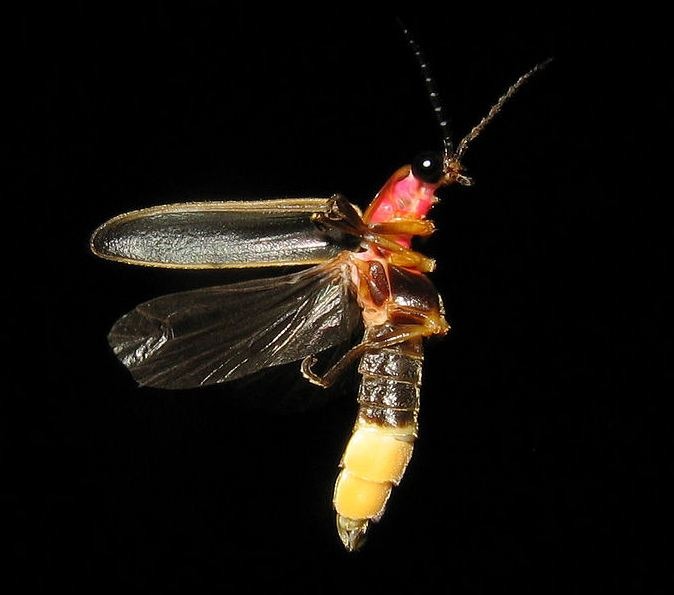Glowworms, as the name suggests, are insects that can glow using bioluminescence. The term glowworm is used to describe a broad range of insects. It is used to refer to four beetle families and many genera of Fungus Gnats. The common factor between these insects is their ability to produce a bioluminescent glow.
Although when people say “Glowworms,” they usually refer to a genus of Fungus Gnats called Arachnocampa that emits green/blue light during its larval stage. This species is the most popular one, and you have likely seen pictures of caves with the larvae of this species glowing like stars on the ceiling.
Several species of fungal gnats can be found across Australia and New Zealand, where they live in dark, damp places such as caves. These insects can seem strange and even scary to an outsider, but they are fascinating to many people.
It can be eerie seeing the roofs of caves filled with these bioluminescent larvae giving the illusion of a starry night. Glowworm caves are a major tourist attraction in New Zealand. Due to the light these insects emit, they can create a magical environment.
Following are some fascinating facts about glowworms:
1. Glowworms are Not Worms
The name “Glowworms” is an excellent example of a common misconception among people about glowworms. Glowworms are not worms at all. Many species of insects in both larval and adult forms are referred to as glowworms. It is a sort of catch-all term used to describe different insects that can glow.
Generally, glowworms can be categorized into two groups: beetles and Fungal Gnats. Commonly found glowing insects such as fireflies and lightning bugs fall into the beetle category. Fungal Gnats are very different from beetles as they are more closely related to flies. None of these insects are actually worms.
As mentioned above, people usually refer to the cave-dwelling Arachnocampa, a genus of Fungal Gnats, when they say “Glowworms.” However, this can vary depending on where the person is from. Fungal Gnats usually emit glow during their larval or pupal stage. One can even say that Fungal Gnats in this larval or pupal stage are glowing maggots.
2. The Nests of Fungal Gnat Glowworms Are Like Hammocks
The nests of fungal gnat glowworms are like hammocks made of silk. These nests can be found hanging from the roofs of caves. A fungal gnat creates this nest out of silk and mucus and bases itself in it. They can repair and reconstruct their nests if it happens to take any damage.
3. Fungal Gnat Glowworms Use Sticky Lines to Catch Prey
With the nest also come the deadly snares. A larva of a fungal gnat glowworm can hang down up to 70 threads of silk. These threads called “snares” are used to catch prey that the glowworm attracts using its glow. The snares are usually thirty to forty centimeters long with beads on them. These beads on the threads are drops of sticky mucus. The prey gets entangled in the snares with the help of the mucus.
Some species of glowworms use poisonous mucus on the threads, which makes them even more deadly. Glowworms prefer areas out of the wind as the wind can tangle up the threads, making them unusable. This is why most fungal gnat larvae live in places like caves.
4. Glowworms Use Their Glow to Attract Prey/Mate
The glow from bioluminescent insects can serve different functions, depending on the species. Some glowworms may use their bioluminescence to attract mates, scare off predators, lure in prey, etc. A common female glowworm uses her glow to attract males.
A fungal gnat larva usually uses its glow to attract prey. The insects are attracted to the light that the larva produces, and as they get closer, they get stuck in the snares. Once prey is caught in the snares, the larva pulls it up and feeds on the trapped insect.
Once the larva has become a pupa, it glows intermittently. The males stop glowing a little while before emerging, whereas the female’s glow increases. This increased glow in the female is considered to be used to attract males. Adult fungal gnats can also glow intermittently.
5. Glowworms Only Eat During Their Larval Stage
Most species of glowworms only eat during their larva form. This is because adult glowworms usually don’t have mouths. Once they have reproduced and laid their eggs, they have reached the end of their life cycle as they die soon after reproducing.
So, a glowworm larva has to ensure that it has enough energy stored up to be able to reproduce once it has grown up. That is why larva of fungal gnats are very good predators. Once they have reached the adult stage, their only aim is to reproduce fast.
6. Fungal Gnat Glowworms Can Sometimes Eat Each Other
Some species of glowworm fungal gnats feed only on fungal spores. Although genus Arachnocampa mostly relies on trapping and feeding on smaller insects. They are also known to cannibalize members of their own species, from adults to fellow larva.
Cannibalism in fungal gnat glowworms is usually a result of a lack of food or territorial differences. They can be very territorial, as space in a cave is hard to come by. If a glowworm encroaches another glowworm, it usually results in a fight and cannibalism.
7. There Are Four Main Stages in a Glowworm’s Lifecycle
Arachnocampa or Fungal Gnats glowworms usually have four stages in their life cycle. Their first stage is when they are an egg. During the second stage, the egg hatches, and a larva emerges. Fungal gnats spend most of their lives as larvae. In this second stage, the larva builds a nest and makes sticky snares to catch prey.
During the third stage, the glowworm turns into a pupa and slowly turns into a fly. Finally, in the fourth stage of its lifecycle, the glowworm turns into a fly. Then it reproduces, lays eggs, and finally dies.
8. Glowworms Use Chemical Reactions to Produce Light
The glow of a glowworm is a result of a chemical reaction that involves a pigment known as luciferin, luciferase, adenosine triphosphate, energy molecule, and oxygen. Among the many different insects generally called glowworms, the organs used to produce light can vary drastically from species to species in terms of location, structure, and size.
This difference can be indicative of separate evolutionary origins of the bioluminescent capabilities in these insects. In other words, different glowworms may have developed the ability to emit light independently.
9. Humans Are Currently the Biggest Danger to Glowworms
Some species of glowworms, such as fireflies, are being affected badly by humans. The main danger to these glowworms is outdoor lighting and habitat destruction. Outside lighting such as street lights and vehicle headlights can distract glowworms when they are looking for a mate.
Destruction of wetlands is robing many glowworm species of habitats. Hence, this is causing a decline in their population.
Conclusion
Glowworms have captivated humans for centuries. Some of their species hang from the ceilings of caves providing an unforgettable experience to those who see them while others wander from one point to another. It is important to educate yourself about these wonders of nature in order to help preserve them. These beautiful insects are facing destruction at the hands of humans. So, steps must be taken to protect them. Their biology and behavior have been a source of knowledge for scientists. Therefore, negative human interference with wildlife should be reduced as much as possible.
